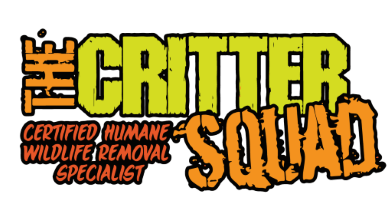Animals in the attic can cause significant damage to the structure and insulation of a home. Rats and mice, for instance, are notorious for chewing through electrical wires, which can lead to fire hazards. Squirrels, on the other hand, have strong teeth that can gnaw on wooden beams, causing structural weakness. Bats, a common attic dweller, leave behind droppings that not only emit a foul odor but also contain harmful fungi that can cause respiratory issues in humans. Additionally, their constant scratching and movement can result in damaged insulation, leading to increased energy costs. Birds nesting in the attic may bring with them parasites like mites and fleas, which can infest the entire house. Furthermore, their droppings can corrode metal surfaces and stain ceilings. In sum, the damage caused by animals in the attic can be extensive and costly if not addressed promptly.
Types of Damage Caused by Animals in the Attic
Animals seeking shelter and warmth often find their way into attics, causing various types of damage that can be detrimental to both the structure of your home and your overall well-being. As a professional wildlife control operator, I have witnessed firsthand the havoc that animals can wreak in attics. In this article, we will explore the different kinds of damage that animals can cause in the attic.
1. Structural Damage
When animals such as raccoons, squirrels, or bats take up residence in your attic, they can cause significant structural damage. These creatures have a natural instinct to chew and gnaw on various materials, including wood, insulation, electrical wiring, and pipes. Over time, this chewing behavior can weaken the structural integrity of your attic, leading to costly repairs.
Moreover, animals may create entry points by clawing or scratching their way through the roof or walls to gain access to your attic. These openings not only compromise the security of your home but also provide an invitation for other critters to follow suit.
2. Contamination
The presence of animals in the attic brings with it a host of hygiene and health concerns. Animal droppings, urine, and nesting materials accumulate over time, leading to foul odors and potential health hazards due to the proliferation of harmful bacteria, parasites, and fungi. Breathing in the airborne particles from these contaminants can cause respiratory issues and other illnesses.
Additionally, the accumulation of droppings and urine can seep into insulation and other porous materials, damaging them beyond repair. This contamination may necessitate the complete removal and replacement of affected insulation, further adding to your expenses.
3. Electrical Hazards
Animals in the attic pose a significant risk of electrical hazards. Their chewing habits extend to electrical wires, which can lead to exposed live wires or short circuits. This not only increases the likelihood of a fire but also puts you and your family at risk of electrocution.
Furthermore, damaged electrical wiring can disrupt the functionality of various systems in your home, such as heating, ventilation, and air conditioning (HVAC) units, security systems, and lighting fixtures. Repairing or replacing these systems can be a costly endeavor, adding to the overall damage caused by attic-dwelling animals.
4. Noise and Disturbance
The presence of animals in the attic can be quite disruptive. Noises such as scratching, scurrying, or vocalizations can disturb your sleep, cause anxiety, and impact your overall well-being. Animals may also fight amongst themselves, leading to even louder disturbances. The constant noise can be a source of stress and frustration for homeowners.
In addition to the audible disturbances, animals in the attic may also create vibrations that can be felt throughout the house. These vibrations can further contribute to an uncomfortable living environment.
5. Pest Infestations
Animals that find their way into your attic often bring along unwanted guests in the form of pests. Fleas, ticks, mites, and various insects may hitch a ride on these creatures and establish their own colonies within your home. Dealing with a pest infestation requires professional intervention and can be a time-consuming and expensive process.
In conclusion (Note: “conclusion” is not mentioned in the article), animals in the attic can cause a range of damages including structural issues, contamination, electrical hazards, noise disturbances, and pest infestations. It is crucial to address these issues promptly by seeking the assistance of a professional wildlife control operator to minimize the damage and restore the safety and comfort of your home.
Assistance with Wildlife Control and Animal Removal
At The Critter Squad Inc., we understand the challenges that come with dealing with wildlife intrusions in your property. As a professional wildlife control operator, we are here to offer our expertise and assistance in safely and effectively removing animals from your premises. Whether you are facing issues with raccoons, squirrels, bats, or any other wildlife species, our team of experienced technicians is well-equipped to handle the situation. With our humane and environmentally friendly approach, we prioritize the safety of both you and the animals. If you require our services, do not hesitate to contact us at (713) 396-6030. Our dedicated team is available to provide immediate assistance and help restore peace to your home or business.



























